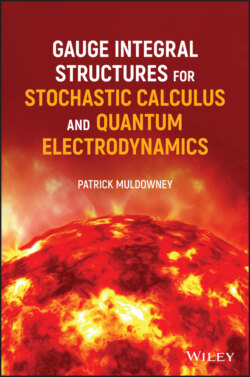Читать книгу Gauge Integral Structures for Stochastic Calculus and Quantum Electrodynamics - Patrick Muldowney - Страница 12
Notes
Оглавление1 2 The attachment “‐complete” was introduced by R. Henstock in [70], the first book‐length exposition of this kind of integration theory. A few of copies of this edition were printed in 1962. A replacement edition with different page size was printed and distributed in 1963. Up to that time J. Kurzweil and R. Henstock had worked independently on this subject from around the mid‐1950s, without knowledge of each other.
2 3 Henstock's introduction of the “‐complete” appendage is suggestive of “enhanced integrability of limits” rather than “completeness of a domain with respect to a norm”.
3 4 As part of the College Prize awarded by St. John's College, Cambridge, on the results of the 1943 Mathematics Tripos Part 2 examination, Henstock received a copy of Dienes’ book [23], which includes close analysis of convergence‐divergence issues. In a late, unfinished work [78], c. 1992–1993, Henstock used some notable ideas from Dienes’ book.
4 5 The final chapter of Henstock's 1962‐1963 book [70] has the title Integration in Statistics. It deals mostly with tests of significance, and touches on some questions of probability theory using the Riemann‐complete method. The 1955 paper is concerned strictly with the nature of integration. But ancillary matters such as probability—and, indeed, differentiation—featured consistently in Henstock's subsequent work.
5 6 In the terminology of [MTRV] and this book, Feynman's method consists of substituting cylinder function approximations in the action functional.
6 7 This simplification represents each of the variables , , and as one‐dimensional. The electric field component is essentially vectorial, and one‐dimensional is contrary to the physical nature of the system. A physically more accurate version can be arrived at by a careful reading of chapter 9 of [FH]. And even though it is a bit more complicated, it is not too difficult to adapt the mathematical theory presented in this book.
7 8 A Cauchy sum has . But allowing to be either of or makes a connection with the Riemann sums of ‐complete integration.
8 9 Theorem 63 (page 175 of [MTRV]) is false. See Section 11.2 below; and also [ website ].
